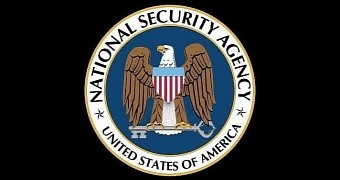The National Security Agency has been a busy bee and it seems that it has agents infiltrated into China, South Korea and even Germany, where they work on programs using “physical subversion” to infiltrate and compromise networks and devices.
The Intercept’s new report is based on yet another batch of documents from Edward Snowden, the NSA whistleblower who now lives in Russia.
The files indicate that the NSA has used operatives working under cover to gain access to sensitive data and systems in the global communications industry. Furthermore, these agents may have even dealt with American firms.
“It’s something that many people have been wondering about for a long time. I’ve had conversations with executives at tech companies about this precise thing. How do you know the NSA is not sending people into your data centers?” said Chris Soghoian, principal technologist for the American Civil Liberties Union, upon seeing the documents.
While up until now NSA leaks have indicated that US companies were working with the intelligence agency more or less on their own accord, this time around, it shows clearly that the NSA may have placed people inside these companies.
Since the NSA spends hundreds of millions of dollars on technology to defeat commercial encryption and the agency works with US and foreign companies to weaken their encryption systems by installing backdoors into the code, this new document shows that the connection goes even deeper.
Documents expose several core programs of the NSA
As the Intercept notes, some of the documents used for this article appear in a documentary that will be launched later this month by Laura Poitras about Edward Snowden. Called “Citizenfour,” the documentary looks at Edward Snowden’s life and describes various programs classified with the designation of “Exceptionally Compartmented Information,” which are only disclosed to a handful of government officials.
The files discuss the agency’s core secrets, which are outlined in a 13-page “brief sheet’ about Sentry Eagle. This is a term the NSA uses to encompass the most sensitive programs it has and which are meant to “protect America’s cyberspace.”
“The facts contained in this program constitute a combination of the greatest number of highly sensitive facts related to NSA/CSS’s overall cryptologic mission. Unauthorized disclosure… will cause exceptionally grave damage to US national security. The loss of this information could critically compromise highly sensitive cryptologic US and foreign relationship, multi-year past and future NSA investments, and the ability to exploit foreign adversary cyberspace while protecting US cyberspace,” the document states.
Sentry Eagle includes six programs. Sentry Hawk is used for activities involving computer network exploitation or spying, Sentry Falcon is used for computer network defense, Sentry Osprey is used for cooperation with the CIA and other intelligence agencies, Sentry Raven for breaking encryption systems, Sentry Condor for computer network operations and attacks, and, finally, Sentry Owl for collaborations with private companies.

 14 DAY TRIAL //
14 DAY TRIAL //